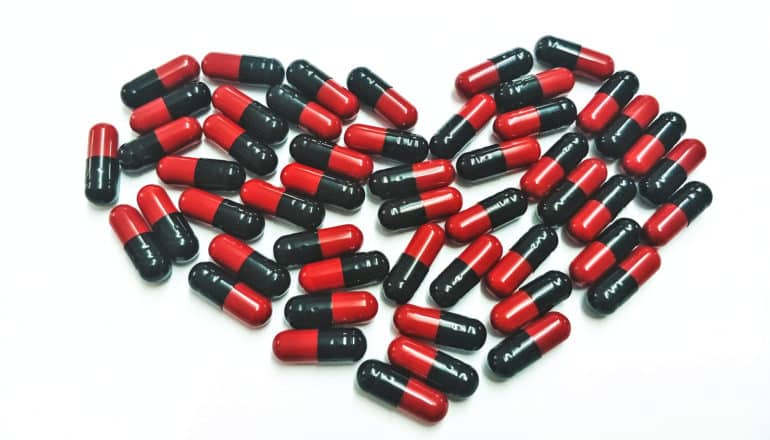
New research identifies a compound that may prevent a dangerous and sometimes deadly arrhythmia called Torsades de Pointes.
Many drugs that are effective against cancer, infections, and other diseases, can induce a lengthening of the heart’s electrical event, or action potential, as an adverse side effect. This can render these drugs unsafe or too risky for patients.
According to the American Heart Association, heart arrhythmias contribute to about 200,000 to 300,000 sudden deaths a year, more than annual deaths from stroke, lung cancer, or breast cancer. The drugs in question, as well as several that have been pulled from the market, cause a prolongation of the QT interval of the ECG (acquired Long Q-T Syndrome).
Through both computational and experimental validation in animal cells, the research team identified a compound named C28. They found that C28 not only prevents or reverses Q-T prolongation, but also does not cause any change on the normal action potential when used alone.
“These findings could prove ground-breaking in the effort to make some cancer drugs safer and bring other drugs back into the marketplace,” says Ira S. Cohen, professor in the department of physiology and biophysics at the Renaissance School of Medicine at Stony Brook University, and director of the Institute for Molecular Cardiology.
“With many of these medications, there is a concentration of the drug that is acceptable, but at higher doses, it become dangerous. If C28 can eliminate the danger of QT prolongation, then these drugs can be used at higher concentrations, and in many cases, they can become more therapeutic.”
The team selected a specific target, IKs, for this latest work because it is one of the two potassium channels that are activated during the action potential: IKr (rapid) and IKs (slow).
They wanted to determine if the prolongation of the QT interval could be prevented by compensating for the change in current that induces the Long QT Syndrome by enhancing IKs. They identified a site on the voltage-sensing domain of the IKs potassium ion channel that small molecules could access.
Xiaoqin Zou, professor of physics, biochemistry, and a member of the Dalton Cardiovascular Research Center and Institute for Data Science and Informatics at the University of Missouri-Columbia and colleagues used the atomic structure of the KCNQ1 unit of the IKs channel protein to computationally screen a library of a quarter of a million small compounds that targeted this voltage-sensing domain of the KCNQ1 protein unit.
To do this, they developed software called MDock to test the interaction of small compounds with a specific protein in silico, or computationally. One by one, Zou and her lab docked the potential compounds with the protein KCNQ1 and compared the binding energy of each one. They selected about 50 candidates with very negative, or tight, binding energies. Coauthor Jianmin Cui, head of the research team and professor of biomedical engineering in the McKelvey School of Engineering in Washington University in St. Louis, and his lab then identified C28 using experiments out of the 50 candidates identified in silico by Zou’s lab.
Cohen and colleagues tested the C28 compound in ventricular myocytes from a small mammal model that expresses the same IKs channel as humans. They found that C28 could prevent or reverse the drug-induced prolongation of the electrical signals across the cardiac cell membrane and minimally affected the normal action potentials at the same dosage. They also determined that there were no significant effects on atrial muscle cells, an important control for the drug’s potential use.
While the researchers emphasize that C28 needs additional verification and testing, there is tremendous potential for this compound or others like it to help change cancer therapeutics as well as turn second line drugs into first-line drugs and return others previously taken off the market because of Q-T prolongation back onto the market.
The findings appear in the Proceedings of the National Academy of Sciences. Support for the research came from the National Institutes of Health and the American Heart Association.
Source: Stony Brook University
The post Compound may prevent arrhythmia side effect appeared first on Futurity.
from Futurity https://ift.tt/3v7zqbt
No comments:
Post a Comment